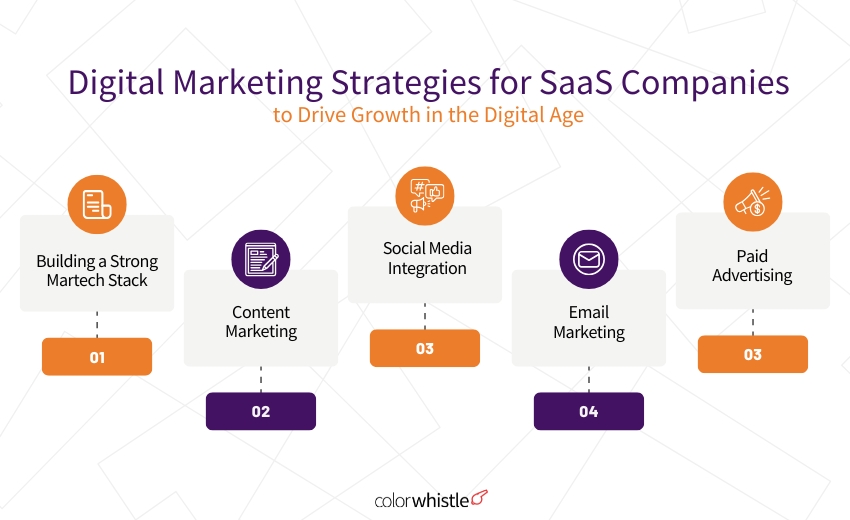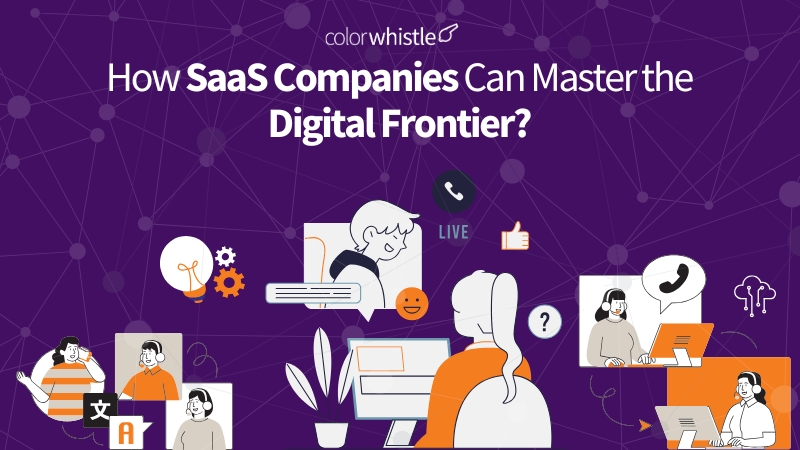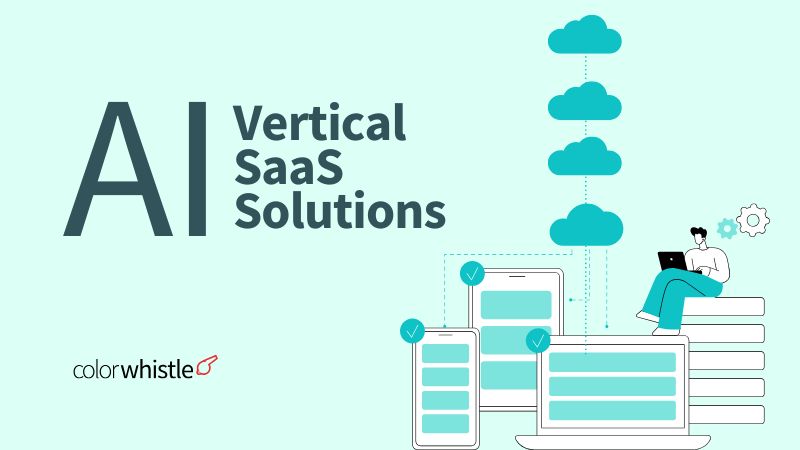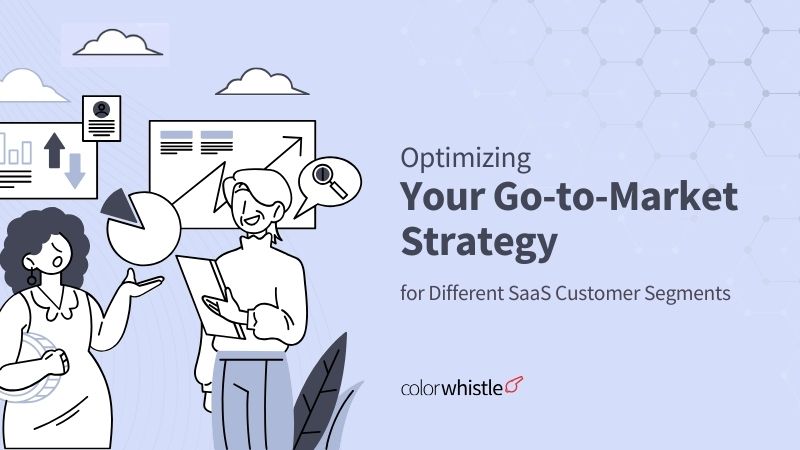SaaS companies face the exciting yet challenging task of mastering the online frontier. The key to thriving in this competitive space isn’t just about having an innovative product; it’s about creating an exceptional online presence that connects with users and converts them into loyal customers.
For example, just like a well-built home needs a solid foundation, your SaaS business requires a strong digital foundation—created through smart website development and effective digital marketing services. Partnering with a professional website development company can help ensure that your SaaS platform is not only user-friendly but also equipped to drive meaningful growth and visibility.

From Niche to Necessity — The Evolution of SaaS
The story of Software as a Service (SaaS) is a fascinating journey from a niche concept to a fundamental pillar of modern business. But it wasn’t always the powerhouse we know today. SaaS started as a humble idea, a novel way to deliver software without the need for expensive hardware, complex installations, or those dreaded CD-ROMs. Remember those?
A Bold New Concept (The Early Days)
In the early days, SaaS was a bit of a rebel in the software world. It challenged the traditional model of software delivery, where businesses had to purchase licenses, install software on individual machines, and manage updates manually. This old-school approach was not only costly but also a logistical nightmare, especially for growing companies.
Enter SaaS—a fresh, cloud-based alternative that promises to make software accessible from anywhere, anytime, and on any device. No more dealing with complex installations or worrying about outdated versions. SaaS brought software delivery into the modern age, offering a subscription model that was both flexible and cost-effective. But back then, not everyone was convinced.
The Rise of the Cloud
As internet speeds increased and cloud computing became more reliable, SaaS’s potential began to shine. Companies like Salesforce, which launched in 1999, were among the first to show the world what SaaS could do. They didn’t just offer a product; they offered a service—a whole new way of thinking about software. Salesforce’s success was a turning point, proving that SaaS wasn’t just a fad but the future.
The cloud provided the perfect environment for SaaS to thrive. It offered the scalability that traditional software couldn’t match, allowing businesses to grow without the growing pains. SaaS solutions could be updated instantly, with new features rolled out seamlessly, keeping companies always ahead of the curve.
SaaS Today is a Cornerstone of Modern Business
Fast-forward to today and SaaS is everywhere. It’s hard to find a business that doesn’t rely on some form of SaaS, whether it’s for customer relationship management, marketing, accounting, or collaboration. SaaS has become so integrated into our daily operations that it’s hard to imagine a world without it.
The SaaS market has exploded, with thousands of solutions catering to every possible need. From small startups to global enterprises, companies of all sizes are leveraging SaaS to streamline their operations, reduce costs, and stay competitive. It’s not just a tool—it’s a strategic advantage.
Where Will SaaS Go Next?
As we look to the future, the evolution of SaaS is far from over. With advancements in AI, machine learning, and automation, SaaS will continue to evolve, offering even more sophisticated solutions that can anticipate needs, streamline workflows, and drive innovation.
What started as a niche offering has become a necessity, fundamentally transforming how businesses operate. SaaS is no longer just an option—it’s the backbone of the digital age, empowering companies to do more, faster, and more efficiently than ever before. And this is just the beginning.
Also Read
The Foundation for Your Digital Presence — The Website Development
For SaaS companies, your website isn’t just a digital brochure—it’s the very heartbeat of your business. Think of it as the storefront of a bustling business in the digital world. It’s where first impressions are made, where potential customers come to learn about your product, and where they decide if they trust you enough to become a customer. In a crowded market, your website is your chance to stand out, and it starts with solid website development.
Why Website Development Matters for SaaS Companies?
Imagine walking into a store where the layout is confusing, the products are hard to find, and the staff is nowhere to be seen. Frustrating, right? The same applies to a poorly developed website. If your site is slow, hard to navigate, or just plain boring, visitors will click away faster than you can say “conversion rate.”
For SaaS companies, a well-developed website is crucial. It’s your 24/7 sales team, customer support, and marketing hub all rolled into one. It must be fast, reliable, and easy to use, providing a seamless experience that guides visitors from curiosity to conversion.
Key Considerations in SaaS Website Development
Performance and Scalability — Your website needs to handle traffic spikes without compromising performance. This is particularly important for SaaS companies that offer free trials or have seasonal marketing campaigns.
Security — Protecting user data is paramount. Implement SSL certificates, data encryption, and regular security audits to ensure your website’s security.
User Experience (UX) — A seamless user experience can significantly impact your conversion rates. Ensure your website is easy to navigate, with clear CTAs and intuitive design.
The Role of WordPress in SaaS Website Development
When it comes to building a killer website for your SaaS company, WordPress is like the Swiss Army knife of the web world—versatile, powerful, and ready to tackle just about anything you throw at it. And it’s not just for blogs anymore! SaaS companies around the globe are utilizing WordPress website development services as WordPress is turning out to be their go-to platform for website development. Why? Because WordPress offers the perfect mix of flexibility, customization, and ease-of-use that any SaaS company needs to thrive online.
WordPress is SEO-friendly right out of the box. With plugins like Yoast SEO, optimizing your content and climbing search rankings is a breeze. And, thanks to its clean code, search engines love WordPress websites.
Security is another big win for WordPress. With regular updates and plugins like Wordfence, your SaaS website stays protected. Plus, the platform integrates easily with all your essential SaaS tools—think HubSpot, Mailchimp, and more—making your website a seamless part of your sales and marketing stack.
Most importantly, WordPress grows with you. Whether you’re adding features, pages, or handling a surge in traffic, WordPress keeps everything running smoothly.
In short, WordPress is the perfect sidekick for any SaaS company looking to build a solid digital presence.
To know more about building your SaaS website with WordPress, read here.
Crafting a Visual Identity That Resonates
For SaaS companies, your website is more than just an online platform—it’s a window into your brand, your values, and the quality of your service. It’s the first thing potential customers see, where they’ll make critical decisions to engage with your product. That’s why crafting a visually stunning and user-friendly website design is crucial. Utilizing professional website design services ensures your site looks great and functions seamlessly. Your website is your brand’s identity in digital form, and the design needs to resonate with visitors from the moment they arrive.
Let’s explore how to create a website design that connects with your audience and elevates your SaaS business.
The Power of First Impressions
It takes just 0.05 seconds for users to form an opinion about your website. This snap judgment can determine whether they stay or leave. So, your website design must be visually appealing, professional, and easy to navigate. A cluttered or outdated design can turn visitors away, no matter how great your product is.
The visual appeal comes down to clean, modern aesthetics, consistent branding, and balanced use of white space. But it’s not just about looking good. Good design enhances the user experience, making it easier for visitors to find what they need, understand your offerings, and take action—whether that’s signing up for a trial, subscribing to your newsletter, or contacting your sales team.
Branding Through Design
Your website design is one of the most important tools for brand storytelling. Every color, font, and image choice should reflect who you are as a company. Are you fun and quirky? Sleek and professional? Cutting-edge and tech-forward? The design elements you choose should communicate your brand personality and values to your audience.
- Color scheme — Colors evoke emotions. Select a palette that matches your brand’s identity and resonates with your target audience.
- Typography — The fonts you select also play a role in branding. It’s essential to choose typography that is not only visually appealing but also easy to read.
- Imagery and Graphic — Images and icons are a powerful way to communicate your message without overwhelming your audience with text. However, they are to be of high quality and aligned with your overall brand aesthetic.
- User-Centric Design — A visually stunning website is pointless if it’s difficult to use. User-centric design is key to crafting a website that works. This means that every element of your design must enhance the user experience, from intuitive navigation to mobile responsiveness.
- Clear Navigation — Your website should be easy to explore. Ensure the navigation is simple, with clear labels and a logical flow. This helps users find information quickly and minimizes frustration.
- Mobile-Friendly — With more than half of web traffic coming from mobile devices, having a responsive design is critical. Your site should adapt seamlessly to different screen sizes, ensuring the experience is equally good on smartphones, tablets, and desktops.
- Fast Load Times — No matter how beautiful your website is, visitors won’t stick around if it takes too long to load. Speed optimization should be a priority in your website design process.
To explore WordPress themes for your SaaS website, read here.
Conversion-Focused Design
Ultimately, your SaaS website aims to convert visitors into customers. That’s where conversion-focused design comes in. Elements like call-to-action buttons (CTAs), strategically placed forms, and landing pages are all designed to guide the user toward taking action.
Your CTAs should be clear, compelling, and easy to find. Every element should be designed with conversion in mind—placing CTAs in logical places, offering concise information, and keeping distractions to a minimum.
Staying Fresh and Relevant
Finally, website design isn’t a one-and-done deal. The digital world evolves rapidly, and so should your website. Regularly refreshing your design keeps it visually appealing and ensures you’re staying relevant to your audience and ahead of competitors.
To know the best players among the SaaS companies in website designing, read here
Also Read
Digital Marketing Strategies for SaaS Companies to Drive Growth in the Digital Age
SaaS companies are swimming in a sea of fierce competition. To not only stay afloat but to thrive, a solid digital marketing strategy isn’t just a nice-to-have—it’s a necessity. Whether it’s building the perfect Martech stack, leveraging digital marketing services, or making the most of social media, these can propel your SaaS company to new heights.
Let’s take a look at some of the most effective strategies to help you make waves in the digital landscape.

Building a Strong Martech Stack — Your Secret Weapon
A well-built Martech stack is like having a superhero toolkit for marketing. It’s the collection of tech tools and software that work together to power your marketing strategy. For SaaS companies, this includes everything from CRM systems to email marketing platforms and analytics tools. But how do you know what tools you need?
Here are some must-haves,
CRM Software (like HubSpot or Salesforce) helps you track customer interactions, manage leads, and streamline communication, making CRM integration services crucial for personalizing outreach and nurturing relationships like a pro.
Marketing Automation (like Marketo or ActiveCampaign) — Marketing automation tools take the heavy lifting off your hands, allowing you to send personalized emails, manage campaigns, and track customer interactions effortlessly, making them indispensable in scaling marketing efforts.
Analytics Tools (like Google Analytics or Mixpanel) — Understanding how people use your website is critical to optimizing both your marketing strategy and user experience. These tools provide deep insights into user behavior and campaign performance.
SEO Tools (like Ahrefs or SEMrush) — These tools, with expert SEO services, help you boost your visibility by uncovering the right keywords, monitoring search engine rankings, and ensuring potential customers can find you easily online.
Think of your Martech stack as the engine that powers your marketing machine. When these tools work together, they help you make informed, data-driven decisions and scale your marketing efforts with ease.
To know about integrating your SaaS website with Martech stack, read here.
Content Marketing — Building Trust and Driving Traffic
Content is still king, especially for SaaS companies. Whether it’s blog posts, white papers, or case studies, effective content marketing with high-quality content builds trust with your audience, positions you as an expert, and drives traffic to your site. What kind of content works best?
- Blog posts and guides — Solve problems for your audience with valuable insights. Share tips, strategies, and how-tos that relate to your product.
- Case studies — Show potential customers how your product has already made a difference for others.
- White Papers and eBooks — Offer deep dives into industry trends or your SaaS solution, providing the valuable insights that decision-makers crave.
And the cherry on top? SEO benefits. Search engines respond well to fresh, relevant content. Publishing it regularly helps your website rank higher, bringing more organic traffic your way.
Social Media Integration — Building a Community
In today’s world, social media is where the conversations happen. Integrating social media management into your marketing plan helps you create a community around your brand, engage with potential customers, and even provide real-time support. But how can SaaS companies maximize social media?
- LinkedIn is perfect for B2B SaaS companies. With strategic LinkedIn management, you can effectively share industry news, product updates, and thought leadership content while optimizing engagement and audience growth.
- X (formerly known as Twitter) works great for quick interactions, customer service, and real-time updates.
- Instagram and Facebook allow you to showcase your brand’s personality and connect with a broader audience through visual content.
Integration is key here. Connecting your social media channels with your SaaS website lets you automate posts, track engagement, and even use customer data from your CRM to create more personalized social experiences. Tools like Hootsuite or Buffer make scheduling and managing content across platforms seamless. Plus, by tracking real-time engagement, you can fine-tune your social strategy to match your audience’s needs.
Read here to learn more about social media integration with your SaaS website/Apps.
Email Marketing — A Direct Line to Your Audience
Even with all the buzz around social media, email marketing remains a cornerstone of digital marketing for SaaS companies. Regular newsletters, product updates, and personalized drip campaigns keep your audience engaged and informed.
Personalization is everything. You can segment your audience based on their behavior or preferences, ensuring every email you send feels relevant to the recipient.
Automated email campaigns are game-changers. From onboarding sequences to re-engagement campaigns, you can nurture leads and guide customers down the funnel—without lifting a finger. With personalized and timely email campaigns, you can build deeper relationships and drive conversions from trial users to paying customers.
Paid Advertising — Instant Results
While organic growth is crucial, paid advertising provides a fast track to visibility. Platforms like Google Ads and LinkedIn Ads allow you to target specific audiences based on demographics, interests, and keywords. For SaaS companies, promoting a free trial or product demo is an incredibly effective lead-generation strategy.
Well-targeted ads can lead to a spike in traffic and sign-ups. The real magic happens when you combine paid advertising with long-term SEO strategies. While paid ads bring immediate results, SEO helps maintain sustained growth in the long run.
How AI is revolutionizing SaaS Companies?
AI is revolutionizing the future of SaaS companies by automating processes, enhancing user experiences, and delivering data-driven insights. With AI integration services, SaaS businesses can streamline operations like customer support through chatbots, personalize marketing efforts, and predict user behavior with advanced analytics. AI also enables smarter decision-making by processing vast amounts of data, identifying trends, and providing actionable insights.
As a result, SaaS companies can improve efficiency, reduce operational costs, and deliver more tailored, responsive services. The future of SaaS is increasingly driven by AI, positioning companies to stay competitive and innovative in a rapidly evolving market.
The Last Push — Navigate the Digital Frontier With Confidence
Mastering the digital frontier for SaaS companies means having the right tools, strategies, and support in place. By investing in expert website development and leveraging the power of digital marketing services, SaaS businesses can build a strong online presence that stands out in a crowded market. With a well-optimized website and smart marketing tactics, you can reach your audience more effectively, enhance user engagement, and ensure long-term success in the digital space.
Stroll through our ColorWhistle pages to discover our tailored services. Ping us or call us at +1 (919) 234-5140, and we’ll be on it like paint on a canvas! Our services are as unique as your business — let’s make magic happen together!
What’s Next?
Now that you’ve had the chance to explore our blog, it’s time to take the next step and see what opportunities await!





